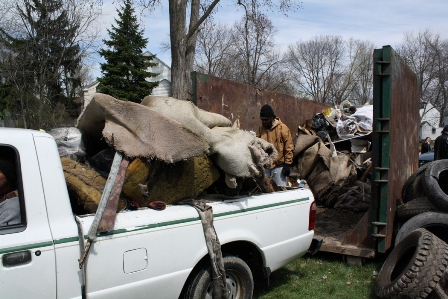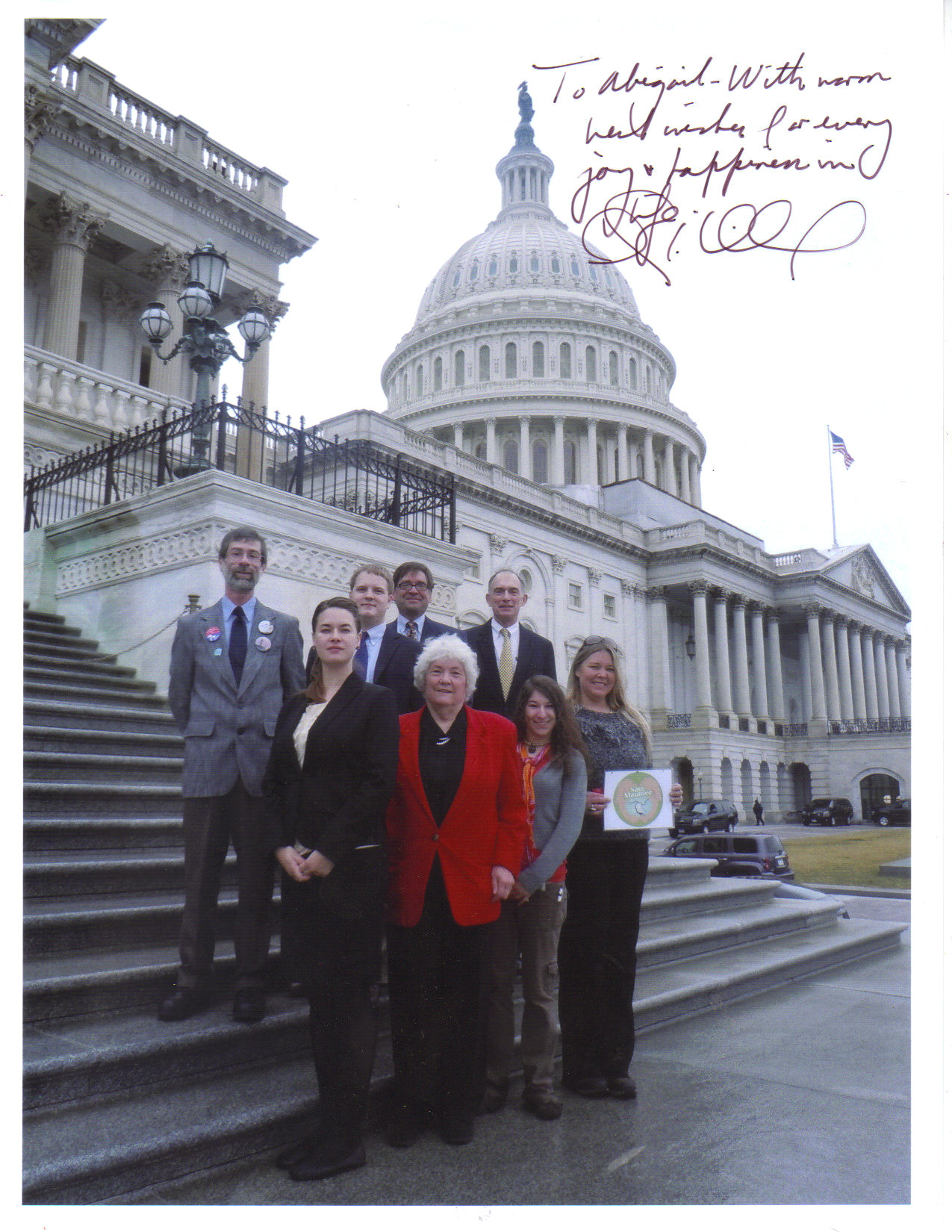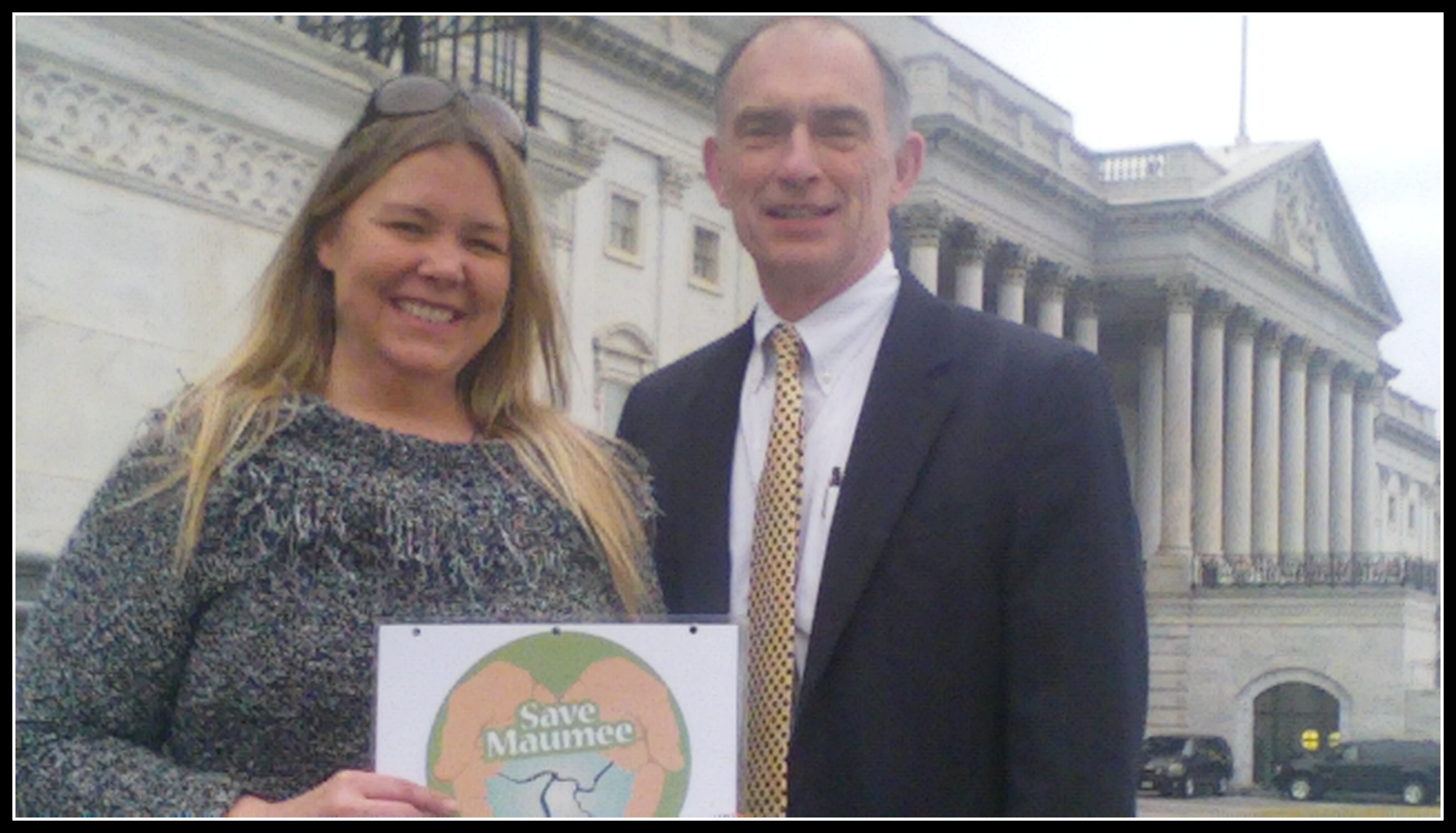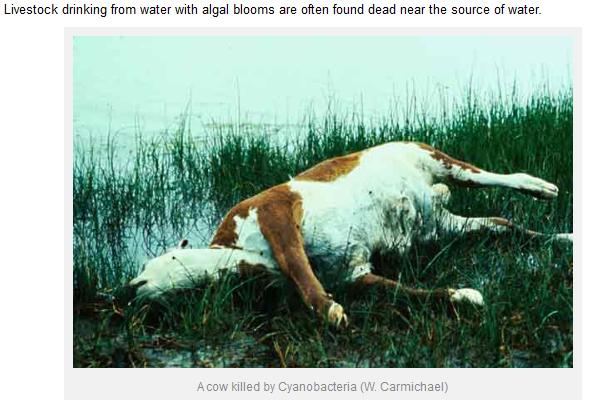Abstract
Stewards of the Three Rivers of Fort Wayne:
By Rhonda Ladig Moxter
The Interaction of Government, Quasigovernment, and Nonprofit Organizations
In the pageant The Glorious Gateway of the West (Rice, 1916) celebrating the centennial of the state of Indiana, the prologue of the first scene discusses the magic that the three rivers of present day Fort Wayne meant to the native people. In the prologue the pageant opens with a native musing, Sacred this place. For untold ages, long lost in the nameless years, my people came with ancient rites where these three rivers run under the shining sky (p. 19). Since the time before Fort Wayne was a city, with native peoples and settlers, the three rivers have been fought over as a source of food, water, transportation, business, and agriculture. The battle over these rivers continues today, and the topics have changed surprisingly little. But, though the circumstances have changed and the fight is just as passionate.
Many groups and organizations have an interest in the health and well-being of Fort Waynes three famous waterways. Local government plays a huge role in the decisions over how the waters of our river can be used by businesses and individuals, deciding what can and cannot be done to these waters. Quasigovernment groups help support and facilitate the missions and directives of various groups of the government to promote, protect, and educate on various aspects of the waters and rivers of Fort Wayne and the surrounding area. Finally, nonprofit and grassroots organizations, some 50 years old and some created in the last several years, charge themselves with shielding the lands and bodies of water that effect Fort Waynes three rivers. Being stewards of these three rivers is no straightforward, easy feat. It involves the consideration of factors that far outreach those of the rivers themselves. And, each of these umbrellas, the government, quasigovernment groups, and nonprofit and grassroots organizations work with one another, whether they meant to or want to, to fulfill their interrelated missions.
City Government
The City of Fort Wayne has a problematic sewer system because of the combined sewer system and its subsequent overflow problem. A combined sewer system has two pipes that direct general rain water to the river and household sewage to the water treatment plant. However, after a heavy rain, the system gets overloaded and sewage is dumped into the river, thus creating a combined sewer overflow, abbreviated CSO (CSO, 2011). Fort Wayne has this type of system and suffers from this situation though it is not unique to Fort Wayne, with as many as 770 other cities in the United States suffering from the same situation (Brugger 2011, slide 4). In compliance with the Clean Water Act , municipalities address these overflows into local waters (Brugger, 2011). The Clean Water Act was created in 1972, but the Environmental Protection Agency (EPA) did not begin enforcement of the combined sewer system provisions until 1994 (Brugger, 2011). To meet these standards, which the city was in violation of, the EPA developed and sent a plan stating what the City of Fort Wayne needed to do to become compliant (Brugger, 2011).
In response to this plan, which was vast and very expensive, in 2001 the city developed a preliminary action plan for the EPA laying out how Fort Wayne could become more compliant with the provision (Brugger 2011, slide 4). The first step was to begin analyzing the costs and benefits of reducing the overflow number from the current average of 71 overflows per year down to a more manageable number (Brugger, 2011). According to the citys Senior Project Manager, Justin Brugger (2011), in an ideal situation it would be possible to stop all overflows; however there are far too many factors to consider that complicate this situation and make negotiating with the EPA for a reduction of overflows the most effective solution. After careful study, it was determined that decreasing the number of overflows per year to 4 had the greatest cost-benefit to the city, thus reducing the overflow volume from an average of 1 billion gallons of sewage dumped into Fort Waynes waterways, to 100 million (Brugger, 2011). The cost of the entire CSO plan that the city purposed to the EPA, which includes additional storage, upgrades, and improvements, in 2005 dollars, was $239 million (Brugger, 2011, slide 10).
After determining the best approach for the city and going into negotiations with the EPA, a consent decree was signed with the City of Fort Wayne in December 2007 (Brugger, 2011). The consent decree, essentially, is a voluntary agreement between the EPA and the city that allows for a solution to the situation without legal action (Brugger, 2011). The decree satisfies many of the EPAs demands, but protects the city from spending money on projects to fix the combined sewer overflow and then being told that they had not done enough, thus having to spend more money (Brugger, 2011). Politically at this time, Fort Wayne had a lame duck mayor, with elections approaching the following year (Brugger, 2011). The EPA knew that it would be harder for a new mayor to get the backing to spend the money needed on the CSO problem, so they were more agreeable to the final plan than they may have been had the city not been in this political situation (Brugger, 2011). Additionally helpful in obtaining the agreement with the EPA was that, at the time of the consent decree, the city had already completed several projects to fix the CSO, for example creating storm sewers, completing water treatment and sewer plant improvements, and establishing a public notification system for when overflows occurred (Brugger, 2011).
The overall cost of this project equals 383% over an 18 period (Brugger, 2011, slide 14). How will the city balance the protection of the rivers, while still protecting citizens and businesses from taking on the whole of the costs? One idea from Justin Brugger (2011) would be to raise property tax to offset the costs, but with Indianas property taxes being capped by the state at 1%, this option will not work. Another option would be to pursue grant money from outside sources to help counterbalance costs, but grants are not an attractive option for local government projects because they are often complicated and more work than they are worth to get and maintain (Beier, 2011). Another idea proposed by Brugger (2011) would be to raise the sales tax by 1/2 percent. This idea is appealing because it would allow those who are using the citys utilities to pay for them (Brugger, 2011). In theory, if someone from an outlying community comes to the city to shop or eat at a restaurant they will using the citys utilities during that time and, thus, they money they were spending in the city would be paying for them in an additional percentage of tax on their purchase. The problem with this solution is that it will likely be unpopular to raise this tax from 7% to 7.5% and it would not be completely fair to have the tax rate in the city pay for the CSO fix, when communities outside of the city also use the utility, for example Leo-Cedarville and Huntertown (Brugger, 2011). So, a final option, and the one the city will likely pursue, is to raise the cost of utilities (Brugger, 2011). According to Brugger this would make the average utility bill for a Fort Wayne resident around $100 per month by the year 2023 (Brugger, 2011).
Could this have an effect on urban sprawl, causing city residents to move out of the city to avoid the high cost of utilities (Brugger, 2011, slides 22-3)? If that were to happen, what would the impact be on property values in the citys neighborhoods? And, if property values are affected, what would then be the impact on the school system, which is funded by property tax (Brugger, 2011, slides 24)? Also, could the residents of the city, who are dealing with a severe level of underemployment, afford such an increase (Brugger, 2011, slides 25-6)? All of these factors must be carefully considered and balanced against the mandate to reduce these sewage overflows into Fort Waynes rivers. Other groups have feelings on what happens to our rivers as well.
Quasi-governmental Organizations
Merriam-Webster (2011) dictionary defines the term quasi-governmental as supported by the government, but managed privately. Quasi-governmental groups are a complicated web of groups that are interconnected with local, state, and federal groups to uphold and fulfill their missions. One of these groups working to improve the regions water quality is the Allen County Partnership for Water Quality (ACPWQ). To understand how complicated these quasi-governmental groups can be, see the explanation of the layout of this organization from its Water Resource Education Specialist, Matt Jones (2011):
The ACPWQ is a county organization. I work under the supervision of the Allen County Soil and Water Conservation District (SWCD). Most SWCDs in the state are involved in some way with the NPDES program. That being said, they have a professional organization at the state and national levels
these organizations have little to do with my day-to-day activities and only offer professional training opportunities and information to SWCDs.
The SWCD and ACPWQ are housed
in a federally administered building that houses the Natural Resources Conservation Service and the Farm Service Agency branches (NRCS and FS, accordingly) of the USDA [United States Department of Agriculture].
The ACPWQ works in this complicated mix of governing bodies through the Clean Water Acts National Pollutant Discharge Elimination System (NPDES) permit program (Jones, 2011).
These NPDES permits, issued by the EPAs Office of Water Management, help to regulate the sources of surface water pollution such as pipes or ditches that run into rivers (OWM, 2011). In this region, permit holders include Allen County, Leo/Cedarville, Huntertown, the City of Fort Wayne, the City of New Haven, Indiana University-Purdue University Fort Wayne, St. Francis University, Ivy Tech Community College, and Indian Tech (Jones, 2011). The monies from the permits are used to fund the ACPWQ through its partner groups including the Allen County Soil and Water Conservation District, the Fort Wayne-Allen County Board of Health, the St. Joseph River Watershed Initiative, and the Maumee River Basin Commission (Jones, 2011). These funding partners communicate regularly with the ACPWQ to fulfill the role of educating local groups, from students to lawn care professionals, on water quality issues that they may effect, or that may affect them (Jones, 2011).
Another regular audience of the outreach and education programs provided by the ACPWQ are local farmers. The requirements under the Clean Water Act that regulate urban and suburban areas do not extend to farms (Jones, 2011). Because of this, the ACPWQ uses its resources to reach out and educate farmers on best practices for water quality (Jones, 2011). The farmers have the choice of whether or not to comply, and because the majority of Allen County is farmland, it is in the best interest of the regions water quality for as much dialogue and education to happen between the ACPWQ and local farmers (Jones, 2011).
Though the ACPWQ does not work directly with the nonprofit groups, Jones (2011) states that because of its broad scope, his organization frequently has knowledge of the many existing nonprofit and grassroots groups in the region and can often be a resource to encourage collaboration or connect several groups when their missions or events overlap.
Nonprofit and Grassroots Organizations
Many nonprofit and grassroots organizations play a role in Fort Waynes three rivers. The group Save Maumee Grassroots Organization (or, Save Maumee, for short) was formally established in 2005, but the focus on the Maumee River all began in 2001 when Abby Frost King (then, Abby Frost) moved to her home near the river. In an interview with Frost King in 2011 she states that she had dreams that her children would play on the banks of the river, swimming and fishing in the waters. When friends and neighbors heard of this, they were appalled and explained to Abby that the reason why was the poor state of the Maumee (Frost King, 2011). When Abby discovered the state of the river and its surrounding ecology, she began crusading to clean up the river and prevent future damage, as well (Frost King, 2011). According to the groups most recent available newsletter, 80% of a streams water quality is inherited at its headwater and the Maumee is fed by the St. Marys and St. Joseph rivers, therefore the group is also has some interest in the citys other two rivers (Understanding, 2011).
The foci are multi-faceted for the group. Save Maumee focuses on the health of the rivers in direct effect of the economy, aesthetic, recreation, and health of the Great Lake Basin (Understanding, 2011). The group relies on volunteers to remove garbage that makes its way in the rivers through direction pollution and also from trash flowing into storm drains that flow into the rivers during a rain (Understanding, 2011). (According to Justin Brugger (2011), this will be the biggest impact the citizens will see once the combined sewer overflow issue is resolved; there will be much less trash flowing into the rivers.) Volunteers for the Save Maumee also cultivate seed and then plant them along the river to aid in erosion control of river banks (Understanding, 2011). They also plant trees, wild flowers, and other plants annually to increase diversity and help reverse pollution (Understanding, 2011).
Besides the physical work of saving the rivers, much of what Frost King and Save Maumee do is simply trying to get enforcement on laws and regulations that are already in existence. For example, one focus of Save Maumee is greater enforcement and oversight of National Pollutant Discharge Elimination System (NPDES) and combined sewer overflow controls already in place by the EPA (Understanding, 2011). Save Maumee also pushes the Clean Water Acts mandate that surface water meet defined standards (Understanding, 2011). As per the act, the standard was to have been met by 1983, though in 2011 the citys rivers are far from meeting this standard, evidenced by being on the EPAs 303(d) list in 2011 (Understanding, 2011). Under section 303(d) of the Clean Water Act, states are required to list impaired waters (Impaired, 2011). Additionally under this section, states must rank the severity of the impairment of the bodies of water by clearly stating their total maximum daily load, which is a calculation of the maximum amount of a pollutant that the body of water can receive and still meet water quality standards (Impaired, 2011).
A specific area that Save Maumee is looking for enforcement of existing provisions is in the Maplecrest Extension Rd. project. The road extension is being built over the Maumee River. According to Frost King (2010), the construction company that is completing the project had not used erosion control techniques, which are required with construction permits on a floodplain, and had subsequently filled in the entire river bed. Frost King then filed a complaint with the Allen County Soil and Water Conservation District, a quasi-governmental group dedicated to the wise use of our soil, water and related natural resources (ACSWCD, 2011). This group had no power to stop construction, but just did cite the violations and communicate them to the County Council (Frost King, 2011). Frost King then contacted the Indiana Department of Environmental Management and had to wait several weeks for the department to show up for an inspection (Frost King, 2010). Per Frost King (2011), the issue was never resolved during construction of the road though all avenues for enforcement were tread.
Besides fighting to enforcing oversight and getting their hands dirty, Save Maumee Grassroots Organization also pushes for policy changes. One such push is to rezone Indianas wetlands as protected areas, because of their benefits to the waters and watershed of Northeast Indiana (Understanding, 2011). Currently, in the region, wetlands are zoned as other instead of as a protected body of land (Understanding, 2011). Save Maumee is not alone in this particular fight.
Another Northeast Indiana nonprofit group working to protect wetlands is the Little River Wetlands Project (LRWP). This group is also a relatively young nonprofit, beginning in 1990, with a mission to restore and protect wetlands in the Little River watershed and to provide educational opportunities that encourage individuals to be good stewards of wetlands and other natural ecosystems (Nolan, 2011). Wetlands are vital to a healthy ecosystem in Northeast Indiana because they have an important impact on improving water quality, storing floodwaters, and holding surface water during periods of drought (Functions, 2001). These vital lands in Northeast Indiana have diminished by 85% and the LRWP works to restore and protect the wetlands as well as educate about the importance of their mission and works (Nolan, 2011). In this effort, LRWP has teamed up with ACRES Land Trust, another local nonprofit group that has been working in the area since 1960 to preserve land in its natural state in the face of growing urban areas and land development (ACRES, 2011). With many nonprofits spending much time and energy on securing reliable funding, LRWP and ACRES have helped bridge that gap by teaming up to accomplish both of their respective missions in LRWPs first shared-purchase property between the two groups (Nolan, 2011).
Conclusion
What can we conclude from the above narrative of the groups that work for water quality in Northeast Indiana? We see that these different types of groups, governmental, quasi-governmental, and nonprofit, have varying directives and missions and challenges, but their efforts often cross-over with the same goal in mind: improving the quality of the water of the three rivers.
For the city government, the challenge is balance. They must consider all stakeholders and factors in every decision made to clean and protect the waters. The federal government has mandates that the city must meet, and they are often expensive. Finding the perfect balance of doing what is best for the rivers, local businesses, city finances, school systems, wildlife, and family budgets is a multi-faceted and demanding tight wire to walk. For nonprofit and grassroots organizations, theyre missions and directives are often narrow and specific, but is a part of a vast, complex system with innumerable factors. This is its own challenge as the successes are measured in small victories, but the aspects involved to get those victories are often large and convoluted. For the quasi-governmental organizations, they often work in a scope of no actual regulatory power, with many bosses to answer to in the sense of the groups providing the funding that have their own individual needs they expect to be accomplished through the organization.
In many parts of the United States (and, truly, the world) discussions of water have to do with control, but in Northeast Indiana the question is not one of quantity but of quality: there is plenty of water, but that also means there is plenty to abuse. The many groups and organization dedicated to minimizing and reversing that abuse face some common challenges. First and foremost is a lack of cohesive enforcement of existing laws and regulations that were established to prevent abuse. Next, as is the case in many situations that involve social issues, there are often turf wars as the multiple groups fight for the limited resources available as they look to fulfill their related but divergent missions. Another common challenge is the idea of group think, in that a group moves in a self-defined direction and eventually becomes disconnected with the reality of the situation, people, events, and concepts with which they are working. But perhaps one of the largest challenges on this issue is that of focused, forward thinking leadership. Until all parties that make the rivers their missions can come together and discuss all of these challenges and opportunities, they will likely continue to push against one another and spin their wheels. In his book The Power of Collaborative Solutions, Tom Wolff (2010) tells a story of a social worker that received a request for the mother of a child with whom the social worker dealt. When the social worker arrived at the familys home at the scheduled time, she found a room full of others waiting. The mother came in and told the group, You are all social workers working with our family. I am going to leave the room. It would be really helpful for our family if you would talk to each other (p.1). A room filled with the rivers social workers addressing the issues, needs, and future would be a natural first step to the long, but worthy discussion involving all of the people that are passionate about Fort Waynes waterways. There will always be groups that want different things for our rivers, but with a common energy, the biggest impact can be made.
And a big impact is what Fort Waynes rivers, in all their history and glory, deserve. At the conclusion of The Glorious Gateway of the West (Rice, 1916), one of the settlers states, Bless these people of Fort Wayne in all their comings and goings.
Bless this new State of Indiana and give it prosperity and true happiness. Bless this meeting place of the three rivers and prosper it and all who shall come to it to make them a home, now and forever. Amen (p. 59).
References
ACRES purpose and history. (n.d.). ACRES Land Trust. Retrieved November 27, 2011, from http://www.acreslandtrust.org/628207
Allen County Soil and Water Conservation District. (n.d.). Retrieved November 27, 2011, from http://www.allenswcd.org/
Beier, B. J. (2011, February 23). Lecture presented at SPEA V504 – Public organizations in Indiana University-Purdue University Fort Wayne, Fort Wayne.
Brugger, J. (2011, March). Sewers and public policy. Lecture presented at SPEA V264 – Urban structures and policy in Indiana University-Purdue University Fort Wayne, Fort Wayne.
Brugger, J. (2011, November 22). [Personal interview].
Frost King, A. (2011, October 4). [Personal interview].
Frost King, A. (2010, October 14). Being cordial to an urgent issue – Maplecrest Extension brige [Web log post]. Retrieved November 27, 2011, from https://blog.savemaumee.org/2010/10/14/being-cordial-to-an-urgent-issue-maplecrest-extension-bridge/
Jones, M. (2011, November 17). [Personal interview].
Jones, M. (2011, November 28). Water rights questions. [Email to the author].
Quasi-governmental. (2011). Merriam-Webster.com. Retrieved November 28, 2011 from http://www.merriam-webster.com/dictionary/quasi-governmental
Nolan, S. (2011, November 8). Phone/email interview [E-mail to the author].
Rice, W., & Goodman, K. S. (1916). Scene I, prologue. In The glorious gateway of the west: An historic pageant of the story of Fort Wayne, commemorating the one hundredth anniversary of Indiana’s admission to the sisterhood of states (ps. 19, 59). Fort Wayne, IN: Centennial Association.
Understanding the depth of Northeast Indiana water related issues. (2011, February). Save Maumee Grassroots Organization.
United States of America, Environmental Protection Agency, Office of Waters. (n.d.). Impaired waters and total maximum daily loads. Retrieved November 23, 2011, from http://water.epa.gov/lawsregs/lawsguidance/cwa/tmdl/
United States of America, Environmental Protection Agency, Office of Waters. (2001). Functions and values of wetlands (EPA 843-F-01-002c). Retrieved November 25, 2011, from http://water.epa.gov/type/wetlands/outreach/upload/fun_val.pdf
United States of America, Environmental Protection Agency, Office of Waters Management. (n.d.). Retrieved November 24, 2011, from <http://cfpub.epa.gov/npdes/index.cfm>.
United States of America, Environmental Protection Agency, Office of Waters Management. (n.d.). Combined sewers overflow. Retrieved November 23, 2011, from http://cfpub.epa.gov/npdes/home.cfm?program_id=5
Wolff, T. (2010). Why Collaborative Solutions? How our Helping Systems are Failing Us. In The Power of Collaborative Solutions: Six Principles and Effective Tools for Building Healthy Communities. San Francisco, CA: Jossey-Bass.
Written By Rhonda Ladig Moxter
Contact Rhonda by email rrlpdmt@hotmail.com







